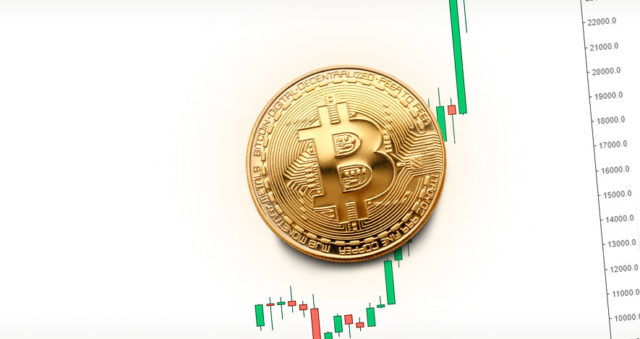- The US Consumer Price Index will increase 3.4% annually in March, following the 3.2% increase recorded in February.
- Annual core CPI inflation is expected to decline to 3.7% year-on-year in March.
- The inflation report could influence the market's assessment of the likelihood of a rate cut in June.
On Wednesday at 12:30 GMT, the Bureau of Labor Statistics (BLS) will release US Consumer Price Index (CPI) inflation data for the month of March. Inflation data could alter the market's assessment of when the Federal Reserve (Fed) will shift its monetary policy, at a time when investors have increasing doubts about the possibility of a rate cut. interest rates in June. Any inflation surprise is expected to increase volatility around the US Dollar (USD).
What to expect from the next CPI?
Inflation in the United States (US) is expected to rise at an annual rate of 3.4% in March, a faster pace than the 3.2% increase recorded in February. The core CPI inflation rate, which excludes food and energy price volatility, would drop to 3.7% from 3.8% in the same period.
Both the monthly CPI and the core CPI would increase by 0.3% in March.
In his speech at an event organized by the Stanford Graduate School of Business, the president of the Federal Reserve (Fed), Jerome Powell, stated that it is likely that the official interest rate has peaked in this cycle, but added that they do not have rush to cut rates: “It's too early to say whether the recent inflation readings are anything more than a blip,” Powell said, adding that the Fed has time to let incoming data guide policy decisions.
Looking ahead to the March inflation report, “we expect next week's CPI to show that core inflation slowed to a 'soft' pace of 0.3% month-on-month, after registering an acceleration of around 0.4 % in January/February,” TD Securities analysts point out in a weekly report. “Used vehicle prices likely fell back into deflation, while OER (Owner's Cost of Ownership) inflation likely rose.” Note that our unrounded forecast for core CPI at 0.26% monthly suggests higher risks of a moderate surprise to a rounded 0.2% increase.”
How could the US Consumer Price Index report affect EUR/USD?
Following a 0.2% increase in December, the Consumer Price Index (CPI) rose 0.3% and 0.4% in January and February, respectively, while the core CPI rose 0.4%. % in both months. These readings revived concerns about a slowdown in disinflationary progress and caused market participants to refrain from forecasting a rate cut until June.
On the other hand, the BLS reported last Friday an increase of 303,000 Non-Agricultural Payrolls in March. This reading followed growth of 270,000 in February and far exceeded market expectations of 200,000, highlighting tense labor market conditions. In turn, the probability of a 25 basis point rate cut in June, according to the CME's FedWatch tool, fell towards 50% from more than 60% before the publication of the jobs report.
Market positioning suggests that the US dollar faces two-way risk ahead of the release of inflation data. Should monthly core CPI rise 0.4% or more, it could give investors confidence that the Fed will remain on hold in June, especially after March's impressive labor market data. In this scenario, the Dollar is likely to gain strength against its main rivals with the immediate reaction. On the other hand, a reading of 0.2% or lower could reignite optimism about continued disinflation and make investors lean towards a rate cut in June, triggering a USD sell-off as a result.
Eren Sengezer, chief analyst of the European session at FXStreet, offers a brief technical outlook for EUR/USD and explains: “The Relative Strength Index (RSI) on the daily chart remains flat near 50 ahead of the inflation data In addition, the pair needs to break out of the 1.0830-1.0870 range, where the 200 and SMA lie. 100 days, to determine your next address.”
“If EUR/USD breaks above 1.0870 (100-day SMA) and begins to use this level as support, it could next target 1.0960 (23.6% Fib level of the October-December uptrend “If the support at 1.0830 (200-day SMA) fails, technical sellers could move in and pave the way for a prolonged decline towards 1.0700 (end point of the downtrend).”
Frequently asked questions about the Fed
What does the Federal Reserve do and how does it affect the dollar?
The monetary policy of the United States is directed by the Federal Reserve (Fed). The Fed has two mandates: achieving price stability and promoting full employment. Your main tool to achieve these objectives is to adjust interest rates.
When prices rise too quickly and inflation exceeds the 2% target set by the Federal Reserve, it raises interest rates, increasing borrowing costs throughout the economy. This translates into a strengthening of the United States Dollar (USD), as it makes the United States a more attractive place for international investors to place their money.
When inflation falls below 2% or the unemployment rate is too high, the Federal Reserve can lower interest rates to encourage borrowing, which weighs on the greenback.
How often does the Federal Reserve hold monetary policy meetings?
The Federal Reserve (Fed) holds eight meetings a year, in which the Federal Open Market Committee (FOMC) evaluates the economic situation and makes monetary policy decisions.
The FOMC is made up of twelve Federal Reserve officials: the seven members of the Board of Governors, the president of the Federal Reserve Bank of New York, and four of the eleven presidents of the regional Reserve banks, who serve for one year on a rotating basis.
What is Quantitative Easing (QE) and how does it affect the USD?
In extreme situations, the Federal Reserve can resort to a policy called Quantitative Easing (QE). QE is the process by which the Fed substantially increases the flow of credit into a clogged financial system.
It is a non-standard policy measure used during crises or when inflation is extremely low. It was the Fed's weapon of choice during the Great Financial Crisis of 2008. It involves the Fed printing more dollars and using them to buy high-quality bonds from financial institutions. QE usually weakens the US dollar.
What is Quantitative Tightening (QT) and how does it affect the US Dollar?
Quantitative tightening (QT) is the reverse process of QE, whereby the Federal Reserve stops buying bonds from financial institutions and does not reinvest the capital of the maturing bonds it has in its portfolio to buy new bonds. It is usually positive for the value of the US Dollar.
Source: Fx Street
I am Joshua Winder, a senior-level journalist and editor at World Stock Market. I specialize in covering news related to the stock market and economic trends. With more than 8 years of experience in this field, I have become an expert in financial reporting.







